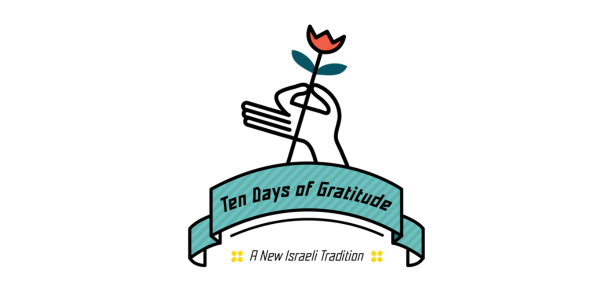Home » About



It all began with one little girl who knew how to live life to the fullest, and whose generosity of soul and spirit also determined how she left it.
Ruth, the daughter of Rachel Ettun, was an incredible young girl able to transform her potentially bleak reality in ways that were unique and wondrous.
Today, inspired by her journey, thousands of people in medical centers and communities throughout the country are learning how to connect to the power of life and speak the language of the spirit, of meaning, and of compassion.

Haverut promotes individual wellness and a healthy society in Israel by incorporating the language of spirituality, creativity, and human connection into the health system. This is a language that creates a healing space for patients and their families as well as health care workers.
Since 2007 we have been implementing projects, developing curricula, and organizing conferences and other events. To date, over 400 medical and therapy-related students and 500 healthcare, welfare, and therapeutic professionals have taken part in Haverut activities, along with thousands of people dealing with chronic illness and other life challenges.
We introduce the language of spirituality into the center of medical discourse in an accessible way through the dissemination of this universal discourse that we believe is vital to every person coping with chronic illness, vulnerability, and death.
Haverut’s holistic approach seeks to incorporate into the delicate and encompassing web of the healing process all those who are partner to it: the patient, the caregiver, family members, and the therapeutic environment. We strive to make possible meaningful encounters between all partners, by providing the language and the tools – emotional, spiritual, and creative – to support them.
Haverut’s staff includes spiritual caregivers, healing musicians, educators, and students from the fields of medicine, nursing, and so on. They are joined by volunteers, consisting of pensioners and others who live in the vicinity of major medical centers.
The world of the medical center is one that everyone in Israel experiences at some point in their lives. As such, it is one of the few spaces in which attention can be paid to healing not just the individual but society as a whole.
How? Through a true and honest engagement with all that life sends our way, including death and weakness, vulnerability and pain. Haverut provides patients and their families, as well as the nursing, medical, and administrative staff, support for the spirit; a quiet place for the soul.

Haverut’s approach connects the individual to all elements of their body, soul, and spirit; holistically engaging the entire person in the process of healing through music, art, writing, and discourse on meaning.
Haverut is dedicated to the fulfillment of a dream of creating wellness together. We invite you to come and be part of this journey.




















The organization was founded by Rachel Ettun in memory of and inspired by her daughter Ruth z”l. Ruth passed away in 1997 at the age of 11.5 from cystic fibrosis. In 2007, on the tenth anniversary of her death, Rachel decided to found Haverut in order to promote a more holistic approach to healing in Israel by bringing together the world of medicine with the language of the spirit, creativity, dialogue, and listening.
From a young age, Ruth asked questions about the meaning of her life, and was deeply connected to her healthy essence, her healthy core. She joyfully welcomed every idea and suggestion that enabled her to celebrate energy and life.
Ruth coped with a difficult and tempestuous illness that included long periods of hospitalization and treatment. When her condition became terminal, at age 8.5, she underwent a lung transplant at the only hospital in the world that agreed to carry out the procedure – the St. Louis Children’s Hospital in the U.S. This prolonged her life for three more years, and she passed away at home at the age of 11.5.
Ruth’s remarkable character and her will to engage with life were a source of inspiration to all, and led to Ruth being able to fulfil her wish of being one of the first children in Israel to be allowed home hospitalization. This required incredible flexibility from the medical staff and from Ruth and her parents, who had to learn and adapt the skills necessary to provide Ruth with the many life-preserving treatments she needed in order to stay at home with her family and live as healthy and as normal a life as possible.
Ruth’s home was replete with family and friends who came to be together, to create, to learn, to laugh, and to play. Her room was covered with her art work; on her nightstand was her journal, in which she wrote daily. Sharp wit and shared song were constant anchors of her existence. Ruth followed her medical condition closely, and was an active partner in all medical decisions, even taking responsibility for noting down her physiological data and reporting these to the doctor at the end of each day.




“During the course of all these years, I, as Ruth’s mother, went through a process. I looked at myself, at Ruth, and at all of us as a family and a community. I asked questions about strength and meaning, I read a lot, consulted with many spiritual leaders, both men and women, and went through psychological counseling. And I, like Ruth, wrote a daily journal. I knew that I was learning something new about medicine, something new about life, and about love.”
“After Ruth died I needed time to mourn and to be alone. I embarked on my studies out of the desire to connect to a spiritual resource that gave me strength and purpose, knowing that at some point it would all come together. Over the years I continued to need the health system more than once, and I saw again the extent to which it is a wonderful system full of excellent, caring people, both as professionals and as human beings. I saw how science and medicine saved lives and that I owe them my life. And at the same time, it was equally clear to me that there was a lack; I experienced the divergence, the gap, between the home and the medical center. The hospital cares for the body in the best way possible, and the home and the community are where one finds the spiritual resources that give strength and meaning to this journey.”
“And then I understood that what I wanted to do was to connect the two. To take the unique, personal model that I had developed at home together with Ruth and make that the standard treatment methodology throughout the health system. To do that, I needed to become part of this system, in order to help create the best possible framework for all those who participate in it.”
“I wanted to try and minimize the fragmentation and compartmentalization, so that modern health care could offer patients the spiritual and emotional, as well as the physical and medical, resources necessary to cope with injury and illness.”
“I met with Professor Tzvi Stern, then head of Hadassah Mt. Scopus, and declared: “I have a dream!”
“I want to say thank you to the health system for all the good that it does, and to give it something that I believe is missing. Something that we currently search for outside of the hospital, but that I believe should be part of the treatment plan.
Namely, the soul and the spirit of the individual. These should be part of the organizational culture, part of language of treatment.
And so it all began.”